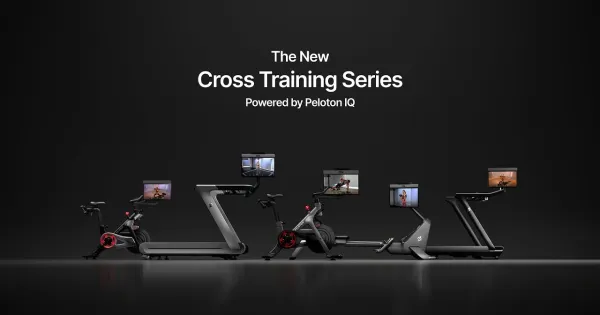How to Drive Growth? Build a SaaS Business

The Software as a Service (SaaS) model has emerged as a powerful driver of growth and innovation. SaaS businesses provide software solutions through cloud-based subscriptions, offering a range of applications from project management to customer relationship management.
This article explores the fundamental principles behind building a successful SaaS business and how it can serve as a catalyst for growth.
Step 1) Identifying a Niche

Finding your niche within the domain of Software as a Service (SaaS) is akin to striking gold. This initial step is pivotal for your SaaS business, as it involves identifying a specific problem within a particular industry and crafting your software solution to cater to those unique needs. Your niche could be streamlining HR processes for small businesses, delivering a robust project management tool for creative agencies, or any other area where you see a gap in the market. By honing in on a well-defined niche, you position your SaaS product as a specialized solution, making it more attractive and valuable to your target audience.
Furthermore, a niche focus enhances your competitiveness and differentiation in the market. It allows you to develop domain expertise and establish your authority within a specific industry. As you continue to refine and expand your software to address the evolving needs of your chosen niche, you not only build a dedicated user base but also create opportunities for growth and innovation. In the ever-expanding SaaS landscape, a niche-oriented approach provides the solid foundation you need to thrive and stay ahead in a highly competitive environment.
Step 2) Customer-Centric Approach

A customer-centric approach is the beating heart of successful SaaS businesses. It's not just about acquiring customers; it's about nurturing relationships with them. Engaging with your early customers is akin to setting the course for your SaaS journey. Collecting their feedback, understanding their pain points, and actively listening to their suggestions is an invaluable asset. This iterative process, often involving product iterations and updates, ensures that your software is in sync with the evolving needs of your user base.
Prioritizing a customer-centric approach extends beyond the initial phases of your SaaS business. It's an ongoing commitment to delivering exceptional user experiences and exceeding customer expectations. By fostering strong relationships with your customers, you not only retain their loyalty but also unlock the potential for valuable referrals and word-of-mouth marketing. In essence, your customers become your brand ambassadors, advocating for your product and driving organic growth, while your SaaS business continues to evolve and thrive in a dynamic marketplace.
Step 3) Scalable Infrastructure

Scalability is a cornerstone of the SaaS model, offering businesses the flexibility to expand and adapt as their customer base grows. As more users subscribe to your software, the demand on your backend infrastructure increases. This means that your system must be equipped to handle higher traffic, data storage, and processing without compromising performance. A cloud-based infrastructure is a natural choice for SaaS businesses because it provides the necessary elasticity to seamlessly scale up as required, eliminating the risk of downtime or performance issues during periods of growth.
Having a scalable infrastructure is not only vital for accommodating more users but also for optimizing operational efficiency. By efficiently managing your resources and adjusting your infrastructure to meet demand, you can significantly reduce operational costs. Additionally, the ability to scale your infrastructure allows you to stay agile in the face of fluctuating market conditions and evolving user needs. It positions your SaaS business to adapt quickly to new challenges and seize opportunities for further expansion, ultimately driving growth and success in the dynamic SaaS landscape.
Step 4) Data-Driven Decision-Making

Within the SaaS landscape, data takes center stage as a vital asset for informed decision-making. It's not merely a collection of numbers but a treasure trove of insights waiting to be unlocked. Utilizing analytics and user data empowers your SaaS business to make informed, strategic decisions about your product. By tracking user behavior, conversion rates, and customer churn, you gain valuable insights into how users are engaging with your software and where improvements may be needed. These insights enable data-driven decision-making, guiding your team in optimizing your software to better meet user expectations and ensuring that your customers remain satisfied and engaged.
Moreover, data-driven decision-making doesn't end with the launch of your SaaS product; it's an ongoing process that fuels your product's evolution. The ability to monitor and analyze data provides you with a dynamic feedback loop for continuous improvement. It's not just about addressing issues; it's about staying ahead of the curve and being proactive in delivering solutions that anticipate user needs. With this approach, your SaaS business is well-equipped to keep up with the ever-changing landscape, retain customers, and foster organic growth, all rooted in a deep understanding of user behavior and preferences.
Step 5) Subscription-Based Revenue Model

The subscription-based revenue model serves as a cornerstone of SaaS businesses, providing them with a dependable and recurring income stream that fuels their growth and sustainability. This model represents a fundamental shift from the traditional software purchase model, where customers make one-time payments. In contrast, SaaS subscriptions create a steady cash flow that can be reinvested into product development, customer acquisition, and scaling operations. This recurring revenue stream allows SaaS companies to not only survive but thrive in an ever-evolving market.
To maximize the benefits of the subscription-based model, SaaS businesses must adopt a customer-centric approach that caters to a diverse audience. This entails offering a range of tiered subscription plans that align with different customer needs, budgets, and expectations. By providing varying levels of functionality, support, and pricing, SaaS companies can attract a wider customer base, making their products accessible to individuals, small businesses, and large enterprises alike. This versatility in subscription plans enhances customer retention as users can seamlessly adapt their subscription levels to match their evolving requirements, ultimately promoting long-term growth and solidifying the SaaS business model as a sustainable revenue generator.
Step 6) Marketing and Sales Strategies

Effective marketing and sales strategies are paramount to attracting and retaining customers. The digital landscape provides a vast arena for engagement, making it imperative for SaaS businesses to employ comprehensive marketing tactics. Digital marketing, which includes strategies such as search engine optimization (SEO), pay-per-click advertising, and email campaigns, can be a powerful tool for reaching your target audience. Content marketing, which involves creating valuable and informative content like blog posts, whitepapers, and videos, not only positions your brand as an industry expert but also draws potential customers to your site through relevant and engaging content. Leveraging social media platforms can further amplify your reach and engage with users on a more personal level.
Additionally, having a well-structured sales team plays a crucial role in the success of a SaaS business. While digital marketing can generate leads and drive interest, a capable sales team can convert these leads into paying customers. This is especially relevant when dealing with enterprise clients and larger accounts, where more personalized and tailored sales strategies may be necessary. A skilled sales force can effectively communicate the value of your SaaS product, address specific needs and concerns, and guide potential customers through the decision-making process, ultimately closing deals and contributing to the growth of your SaaS business.
Step 7) Customer Support and Retention

Retaining customers is not only cost-effective but also a vital component of long-term success. Providing excellent customer support is one of the primary ways to ensure customer retention. When users encounter issues or have questions about your software, addressing their concerns promptly and efficiently can make all the difference. By offering reliable and responsive customer support, you demonstrate a commitment to customer satisfaction, which is essential in retaining their loyalty. Satisfied customers are more likely to renew their subscriptions and become brand advocates, promoting your software to others.
Another pivotal strategy for customer retention is engaging with your user base on a regular basis. Actively gathering feedback and insights from your customers can help you refine and enhance your product to meet their evolving needs. This feedback loop not only strengthens your relationship with customers but also fosters brand loyalty. Furthermore, building a community around your product can create a sense of belonging and shared interest among your users. Through forums, user groups, and other engagement channels, you encourage users to interact with one another, share their experiences, and provide peer support. This community-based approach not only boosts retention but also encourages users to become advocates for your brand, driving organic growth through word-of-mouth referrals.
Step 8) Innovation and Adaptability

SaaS innovation is the foundation of staying competitive and relevant. SaaS businesses must continuously strive to keep pace with industry trends and emerging technologies. Staying updated is not only crucial for understanding the evolving needs of your user base but also for anticipating and meeting those needs ahead of the competition. By monitoring market trends, you can identify new opportunities and position your software to address emerging challenges, maintaining your relevance and driving sustainable growth.
Adaptability is another key attribute of a successful SaaS business. Being open to pivoting your product or expanding into related niches can be a game-changer. As the market evolves and user demands change, you may find that your original product can be tailored or expanded to address new challenges. Being flexible and willing to adapt your software to meet these needs can be the key to long-term success. By demonstrating the ability to pivot and diversify, SaaS businesses can seize new opportunities, secure their competitive edge, and drive growth that aligns with the evolving landscape of the industry.
Step 9) Security and Compliance

For a SaaS product security is not just a best practice; it's a fundamental necessity, particularly when dealing with sensitive user data. Robust security measures must be a top priority for SaaS businesses to safeguard user information, maintain the trust of customers, and comply with data protection regulations such as the General Data Protection Regulation (GDPR). Security breaches can have catastrophic consequences, eroding user trust, damaging the reputation of a SaaS business, and potentially leading to legal ramifications and financial penalties.
To ensure the safety and security of user data, SaaS companies should invest in state-of-the-art security infrastructure, encryption protocols, and regular security audits. Moreover, educating and training employees on data security best practices is crucial to prevent vulnerabilities caused by human error. By demonstrating a strong commitment to data security and privacy, SaaS businesses can build and maintain trust among their user base, ultimately fostering customer loyalty and ensuring the sustainability and growth of their operations.
Step 10) Partnering and Integrations

Collaboration and strategic partnerships are powerful drivers of growth for SaaS businesses. By teaming up with complementary businesses in related industries, SaaS companies can explore integration opportunities that extend the reach and functionality of their products. Integration is a win-win for both SaaS providers and their partners, as it enhances the overall value proposition for users. For instance, a project management SaaS platform might integrate with a time tracking tool, providing users with a comprehensive solution for managing their work efficiently.
These integrations not only make your SaaS product more attractive to users but also open up new avenues for customer acquisition. When users find that your software seamlessly connects with other tools they already use, it enhances their experience and encourages them to stay loyal to your brand. Moreover, integration partnerships can also lead to co-marketing opportunities, allowing both businesses to cross-promote their products to a wider audience. This collaborative approach not only fosters growth but also solidifies your position in the SaaS market by creating a network effect that benefits all parties involved.
Top SaaS Companies
- Salesforce: Known for its CRM software, Salesforce provides a broad range of cloud-based business applications.
- Microsoft: Microsoft's SaaS offerings include Microsoft 365 (formerly Office 365) and Azure services.
- Amazon Web Services (AWS): AWS offers various SaaS solutions, such as Amazon S3 and Amazon RDS.
- Adobe: Adobe offers creative and marketing SaaS products, including Adobe Creative Cloud and Adobe Marketing Cloud.
- Oracle: Oracle provides SaaS solutions for ERP, CX (Customer Experience), and HCM (Human Capital Management).
- ServiceNow: ServiceNow focuses on ITSM (IT Service Management) and workflow automation.
- SAP: SAP offers SaaS applications for various business needs, including SAP Business ByDesign and SAP SuccessFactors.
- Atlassian: Atlassian's SaaS tools like Jira and Confluence are popular for software development and project management.
- Slack: Slack is a team collaboration platform known for its messaging and file-sharing features.
- Zoom: Zoom Video Communications is a leading video conferencing platform.
- Workday: Workday specializes in cloud-based financial management and human capital management.
- Zendesk: Zendesk provides customer support and engagement SaaS solutions.
- HubSpot: HubSpot is known for its inbound marketing and CRM SaaS platform.
- Dropbox: Dropbox is a cloud-based file storage and collaboration tool.
- DocuSign: DocuSign offers eSignature and contract lifecycle management solutions.
- Box: Box provides cloud content management and file sharing.
- SurveyMonkey: SurveyMonkey is a popular SaaS platform for creating and conducting surveys.
- Shopify: Shopify is an e-commerce SaaS platform for building and managing online stores.
- Twilio: Twilio is known for cloud communications and customer engagement solutions.
- RingCentral: RingCentral offers cloud-based communication and collaboration services.
Final Thoughts
Building a successful SaaS business is a journey that involves a deep understanding of your target audience, relentless commitment to improvement, and a customer-first approach.
By identifying a niche, prioritizing customer satisfaction, and staying agile in a dynamic market, you can harness the power of SaaS to drive growth and innovation in your business. SaaS isn't just a product; it's a dynamic and evolving ecosystem that can transform industries and create new opportunities for entrepreneurs and businesses worldwide.





